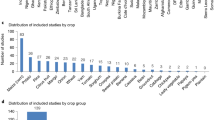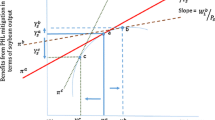Abstract
FAO has in the past given much attention to the development, dissemination and use of methods to assess pre- and postharvest crop losses. The experience gained shows that losses vary with location, crop, pest and differ from year to year. The collection of data on a national or regional basis is expensive, since data have to be collected over a number of years. Therefore, loss assessment is now mainly used as a tool to develop loss reduction strategies and to assesss the cost-effectiveness of introduced methods.
A reservation is made with respect to the quoting of data on losses, without giving information on how these data were collected and interpreted, because data presented in that way can easily be misinterpreted.
Many useful crop preharvest loss assessment methods are presently available for the researcher, but there is, however, an urgent need for simple methods for use by extensionists and farmers in other situations. The developed methods to assess postharvest losses in grains are adequate.
Résumé
Dans le passé, la FAO s’est particulièrement attachée au développement, à la diffusion et à l’utilisation de méthodes permettant d’évaluer les pertes avant et après récolte. L’expérience acquise montre que les pertes dépendent beaucoup de l’emplacement, de la récolte et des déprédateurs, et qu’elles varient d’année en année. Il est coûteux de recueillir des données au niveau national ou régional, d’autant plus que cette activité doit être menée pendant plusieurs années. De ce fait, actuellement, l’évaluation des pertes sert surtout à développer des stratégies de réduction des pertes et à évaluer la rentabilité des méthodes introduites.
Une réserve est émise pour ce qui est de la citation de données sur les pertes sans donner d’informations sur la manière dont elles ont été recueillies et interprétées. En effet, des données présentées de cette manière peuvent aisément être mal interprétées.
De nombreuses méthodes d’évaluation des pertes avant récolte sont actuellement à la disposition du chercheur, mais il est nécessaire de développer au plus vite des méthodes simples à l’usage des agents de vulgarisation et des fermiers. Les méthodes développées pour évaluer les pertes aprés récolte sont adéquates.
Similar content being viewed by others
References
Boxall R. A. (1986) A critical review of the methodology for assessing farm level grain losses after harvest. Tropical Development and Research Institute Report G/9 pp. 139.
Chiarappa L. (1970) FAO Manual of Crop Loss Assessment Methods + 2 Supplements. FAO + CAB, Farnham Royal, Slough, U. K. (Looseleaf).
De Lima C. P. F. (1979) The assessment of losses due to insects and rodents in maize stored for subsistence in Kenya. Trop. Stored Prod. Inf. 38, 16–21.
FAO (1967) Papers Presented at the FAO Symposium on Crop Losses. Rome, 2–6 October 1967.
FAO (1983) Experiences with Loss Assessment in Post-Harvest Loss Reduction Programmes. FAO Prevention of Food Losses Programme.
FAO (1987) Draft Manual for Loss Assessment in Rice Post-harvest Systems (prepared by Anthony R. W. V. and Arboleda J. R.) FAO Prevention of Food Losses Programme.
Feijen H. R. (1979) Economic importance of rice stem borer, Diopsis macrophthalma in Malawi. Exp. Agric. 15, 177–186.
Harris K. and Lindblad C. S. (1978) Post-harvest grain loss assessment methods. Cereal Chem. St. Paul, Minnesota, USA.
Kenmore P. E. (1987) Crop loss assessment in a practical integrated pest control programme for tropical Asian rice. In Crop Loss Assessment and Pest Management. (Edited by Teng. P.) pp. 225–241. APS. St. Paul, Minnesota, USA.
Litsinger J. A. (1984) Assessment of need-based insecticide application for rice. Paper presented at MA-IRRI Technology Transfer Workshop, March 15.
NAS (1978) Postharvest Pood Losses in Developing Countries. National Academy of Sciences, Washington D.C. USA.
Proctor D. L. and Rowley J. G. (1983) The thousand grain mass (TGM): A basis for better assessment of weight losses in stored grain. Trop. Stored Prod. Inf. 45, 19–23.
Reed C. (1986) Characteristics and limitations of methods to estimate losses in stored grain. Postharvest Grain Systems R&D. Special Report No. 16. Food and Grain Institute, Manhattan, Kansas, USA.
Schulten G. G. M. (1975) Losses in stored maize in Malawi and work undertaken to prevent them. Bull. EPPO 5, 113–120.
Schulten G. G. M. (1982) Consultancy report on loss assessment. Prevention of Food Losses Programme.
Sumangil J. P. (1984) IPM for cost reduction in the Masagna-99 rice production programme. Paper Presented at the Agritech 84 Conference, 9 September. Manilla, Philippines.
Swaine G. (1957) Maize and sorghum stalk borer, Busscola fusca, in peasant agriculture in Tanganyika. Bull. Ent. Res. 48, 711–722.
Teng P. (Editor) (1987) Crop Loss Assessment and Pest Management. APS Press. St. Paul, Minnesota USA.
Tyler P. S. and Boxall R. A. (1984). Post harvest loss reduction programmes. A decade of activities; what consequences. Trop. Stored Prod. Inf. pp. 4–13.
Van der Graaff N. (1981) Increasing the reliability of crop loss information: The use of indirect data. In Crop Loss Assessment Methods (Edited by Chiarappa) supplement 3, 65–69. FAO and CAB, Farnham Royal, Slough, UK.
Walker P. T. (1983) Crop losses: The need to quantify the effects of pests, diseases and weeds on agricultural production. Agriculture, Ecosystems and Environment 89, 119–158.
Walker P. T. (1987) Losses in yield due to pests in tropical crops and their value in policy decision-making. Insect Sci. Applic. 8, 665–671.
Author information
Authors and Affiliations
Rights and permissions
About this article
Cite this article
Schulten, G.G.M. FAO’s Experiences with Crop Loss Assessment. Int J Trop Insect Sci 9, 763–767 (1988). https://doi.org/10.1017/S1742758400005658
Received:
Published:
Issue Date:
DOI: https://doi.org/10.1017/S1742758400005658




